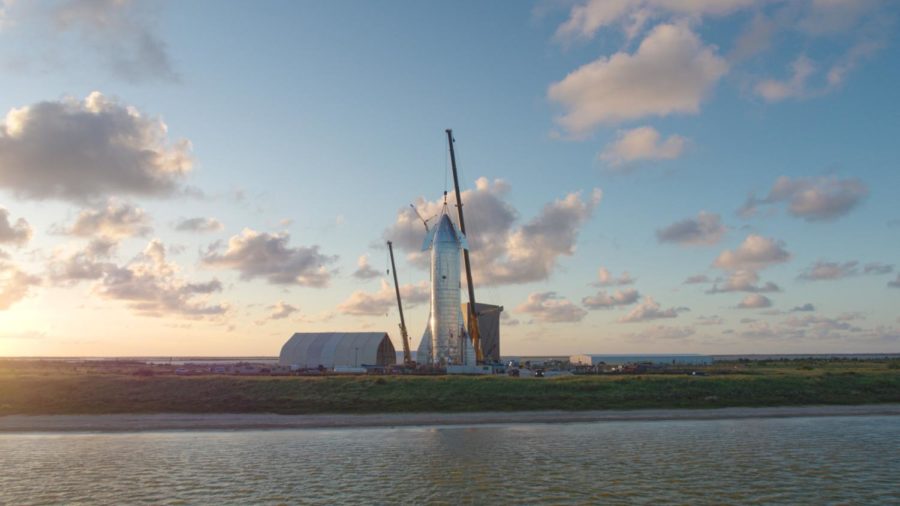Starship Update
The Starship MK.1 prototype at the SpaceX launch site in Boca Chica, TX. Photo Credit: Elon Musk/SpaceX via Twitter.
Elon Musk revealed updates to SpaceX’s Starship, which will take humans to Mars.
Over the past year, SpaceX has made changes to the Starship and Superheavy design. These changes are due to a rapid increase in testing and the use of the Starhopper prototype down in Boca Chica, TX.
SpaceX has changed the aerospace industry since its inception. Elon Musk’s Starship presentation was a reflection on the progress made so far, and an updated plan for the future. Here is a breakdown of the details of the event which occurred on Sept 28, 2019.
Starship:
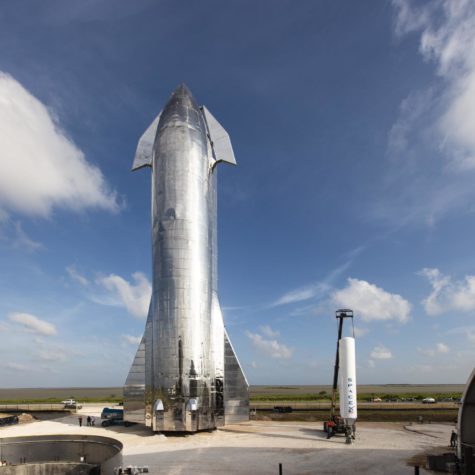
Starship is the main rocket/ second stage/spacecraft for future crewed missions by SpaceX to Mars and the Moon. Currently, there are two teams internal to SpaceX building two different prototypes, one team in Boca Chica, and another in Cocoa Beach, FLA. Starship prototype MK.1 (mark 1) is being constructed in Boca Chica, while MK.2 is under construction in Cocoa Beach.
Starship will have a total of tree vacuum optimized Raptor engines, and three sea level Raptor engines. Starship will land similar to the Falcon 9 boosters but will use a system of actuated fins, which will help it generate lift. Starship will have a height of 50 meters and a diameter of 9 meters.
Superheavy:
Superheavy is being designed to lift Starship to orbit and return back to the launch site in a manner almost identical to the Falcon 9 booster. Superheavy will have a total of 37 Raptor engines, similar to the failed Soviet N-1 moon rocket.
The diameter of Superheavy will be 9 meters and a height of 68 meters, which with Starship included will eclipse the famous NASA Saturn V rocket as the tallest rocket ever built.
The Raptor engine:
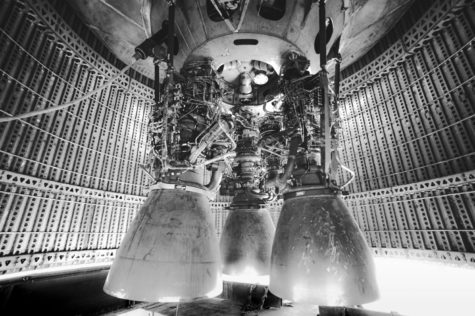
The Raptor engine is in the process of development and testing by SpaceX both at their McGregor and Boca Chica test sites in Texas. The Raptor is a major breakthrough in rocket engine technology due to the fact it is a full flow staged combustion engine.
Raptor also runs on Methane and liquid oxygen (LOX) instead of RP-1 Kerosene and liquid oxygen (LOX). RP-1 and LOX has been used on the Merlin engine-the current engine the SpaceX uses on the Falcon 9 and Falcon Heavy.
In data provided by SpaceX, the Raptor engine produces a total thrust of two MegaNewtons. In a tweet Elon Musk said the “sea level Raptor’s vacuum Isp [specific impulse] is ~350 sec [seconds], but ~380 sec [seconds] with larger vacuum-optimized nozzle.”
The fate for Starhopper:
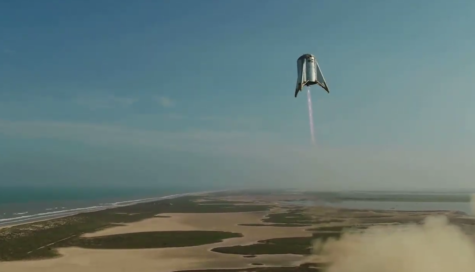
Starhopper is flying testbed used for testing the Raptor engine, which is in development by SpaceX. The Starhopper was built by a water tower company, a first for a rocket prototype. Starhopper made a few small hops in Boca Chica, including the last one which reached a total altitude of 150 meters.
Currently, Starhopper is in the process of being modified to be a stationary test stand for static firings of Raptor engines. However, depending on the condition Starhopper may be in due to the last flight, it could also be decommissioned altogether.
11 years of progress:
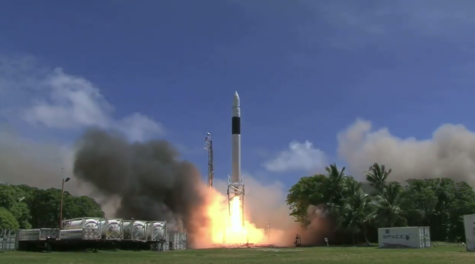
Elon Musk decided to have this year’s Starship presentation on the 11-year anniversary of Falcon 1 flight 4, which launched on Sept 28, 2008. Flight 4 was the first launch of the Falcon 1 which reached orbit and the first successful one.
Since 2006, SpaceX has flown a total of five Falcon 1, 74 Falcon 9, and three Falcon Heavy flights. This number will certainly grow in the years to come. During the years SpaceX became the first company to land an orbital class booster and reuse one again. So far, SpaceX has so far had at least 27 booster landings.
The future for SpaceX:
SpaceX plans on testing both MK.1 and Mk.2 Starship prototypes by carrying out high altitude hops, which will test the landing maneuvers a Starship would make while reentering the atmosphere after a mission. According to Musk, SpaceX plans to start construction on prototypes MK.3 and MK.4. MK.3 may be the first Starship to launch to orbit on a superheavy prototype.

However, SpaceX will still fly Crew Dragon, Falcon 9, and Falcon Heavy missions. Once Starship/Superheavy is on line and flight proven, Starship will cause Falcon 9, Falcon Heavy, and Crew Dragon to become obsolete and they will be discontinued.
The Status with Falcon Heavy:
Falcon Heavy has already had three flights including the Falcon Heavy demonstration flight in 2018. The first flight of the Falcon Heavy rocket on Feb 6, 2018. The flight was mostly a success minus the landing of the center booster.
The launch was immensely popular with the live SpaceX webcast of the launch gaining “2.3 million concurrent views on YouTube” according to the Verge, making it the second-most viewed webcast ever on YouTube. The mission did launch Elon Musk’s personal cherry-red Tesla Roadster into space to an orbit around the Sun nearby Mars.
Falcon Heavy was also flown on the Arabsat 6A and STP-2 missions on April 11, and June 25, 2019 respectively. During the Arabsat 6A mission, the center core booster did land successfully on the droneship, “Of Course I Still Love You” but tipped over in rough seas on the way back to Cape Canaveral, Fl. During the STP-2 mission, the center core attempted to land on the droneship but, the booster crashed into the ocean, continuing the trend the loss of center core boosters.
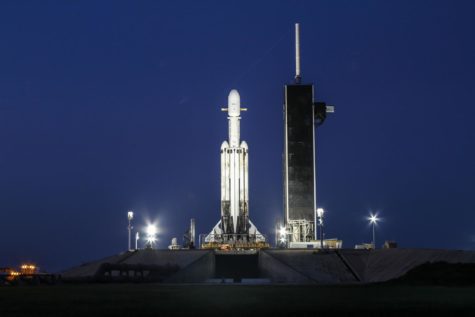
However, the STP-2 mission was the most demanding launch to date for SpaceX. The mission was the first reuse of the two side-core boosters on a Falcon Heavy.
Plus, the mission was crucial to prove to the DoD that SpaceX should get launch contracts. There is no planned Falcon Heavy launch planned until late 2020 with the AFSPC-44 mission for the US Air Force.
Commercial Crew:
Under the contract given to SpaceX from NASA, SpaceX will launch Crew Dragon spacecrafts to the International Space Station carrying NASA astronauts. The first test flight of the Crew Dragon, DM-1 was carried out on March 6, 2019 and lasted until March 8.
The first manned Crew Dragon flight, DM-2 will occur in early 2020. The crew of DM-2 will consist of Douglas G. Hurley and Robert L. Behnken. Boeing also was awarded part of the Commercial Crew Program contract with the CST-100 Starliner spacecraft.
The original launch of DM-2 was scheduled for the summer. But, the static fire anomaly, which destroyed the recovered DM-1 capsule has delayed the launch. The abort motors called SuperDracos were not the cause of the explosion, rather the plumbing for the abort motors were the cause.
The anomaly caused a months long investigation into the failure. The investigation has reportedly been going smoothly from both SpaceX and NASA. The investigation is reportedly in it’s final stages.
Before DM-2 launches with Hurley and Behnken aboard, SpaceX will launch a Crew Dragon on a Falcon 9. During the ascent, the abort motors will fire and push the capsule away from the rocket and then use parachutes to splash down in the Atlantic. The mission will be called the In Flight Abort and is scheduled for December.


